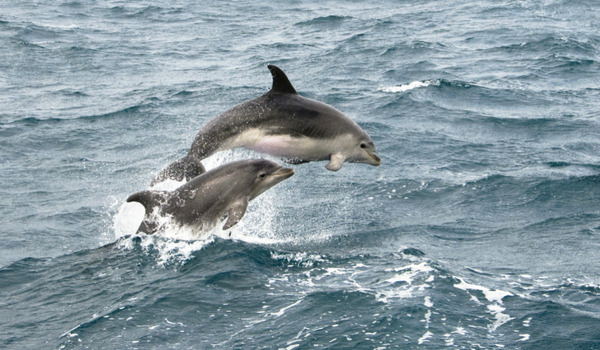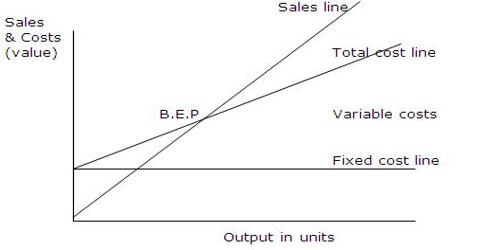There are a number of different technologies that can be used to track dolphins in order to study their behavior and habitat use, and to monitor their populations. Some of the most common methods include satellite tagging, which involves attaching a small device to the dolphin that transmits location data via satellite; acoustic tracking, which uses underwater microphones to track the movement of dolphins based on the sounds they make; and visual identification, which involves using photographs or other visual markings to identify individual dolphins. Some of the most advanced tracking systems for dolphin conservation also incorporate machine learning algorithms to analyze data and identify patterns in dolphin behavior over time.
Data from dolphin wearables can now be used to estimate how much energy dolphins use when swimming, just like a smartwatch can tell its wearer how many calories they consume during exercise. University of Michigan engineers have led the development of wearable sensors for marine mammals to monitor movement and behavior in order to improve marine conservation efforts for these animals in collaboration with marine mammal specialists at Dolphin Quest Oahu.
Human disturbances in their habitat, such as climate change, overfishing, noise pollution from shipping, construction, oil exploration, and navy sonar activity, have an impact on dolphins and other sea creatures. These types of disturbances can disrupt important animal behaviors such as fish foraging and socialize, but measuring disturbance is difficult because the animals live underwater.
Biologging tags, which are similar to fitness trackers used by humans, are used in biology research, but estimating the energetic cost of swimming has proven difficult. Michigan engineers can now measure animal movement during thousands of strokes as they swim using custom biologging tags developed in collaboration with Loggerhead Instruments, the Woods Hole Oceanographic Institution in Massachusetts, and Aarhus University in Denmark.
Our goal is to use tag data to estimate foraging events, how many fish were consumed during a day, and connect that to estimates of how much energy dolphins use during the movement required to catch those fish.
Alex Shorter
“Our goal is to use tag data to estimate foraging events, how many fish were consumed during a day, and connect that to estimates of how much energy dolphins use during the movement required to catch those fish,” said Alex Shorter, U-M assistant professor of mechanical engineering and senior author of a paper in the Journal of Experimental Biology. “This is important for conservation because we can then use our approach to estimate energetic costs when these animals are disturbed.”
In their new work, the researchers were able to develop estimates of energetic cost from tag data by working with their human and animal collaborators at Dolphin Quest. In this unique environment, the researchers were able conduct repeatable swimming trials over a range of speeds from multiple animals to generate the data needed to estimate how much energy the animals were using as they swam. Marine mammal specialists trained the dolphins to wear the tracker during lap trials and periods of free swimming.
The tag sits between the blowhole and dorsal fin of the dolphin, attached with suction cups, where it noninvasively measures speed, temperature, pressure, and movement. Six dolphins participated in the work, and just like data collection with humans, the animals were free to decline to participate in the work at any time.

During the prescribed lap trials, the animals started from rest at a floating dock and swam an 80-meter lap underwater around one of the marine mammal specialists and back to the dock at speeds of up to 21 kilometers per hour. During free swimming, in which the dolphins received no instructions, tags tracked movement for periods that ranged from 9.5 to 24 hours. One of the dolphins tracked for a 24-hour period swam over 70 kilometers, and these data were used for a case study of daily activity and energetic cost for a bottlenose dolphin. Importantly, these findings can be extended to tag data from animals in the wild.
“Our tag-based method is universally applicable to both animals in managed and wild settings, and can lead to a host of new research in monitoring the physical well-being of dolphin populations, which in turn will inform how we as humans are affecting their travel patterns, feeding requirements, and lives in general,” said Joaquin Gabaldon, a postdoctoral researcher in robotics and first author of the study.
“From a technological perspective, it is our hope that other researchers see the potential of dedicated on-tag speed sensing, and pursue the development of more adaptable speed sensors to enable energetics monitoring for a wider variety of marine animals,” Gabaldon said.
This work dovetails with two of Shorter’s other projects related to dolphin conservation. He and Bogdan Popa, U-M assistant professor of mechanical engineering, are studying how dolphins use echolocation to capture fish and image their environments. In addition, current work led by researchers at Duke University and the Oceanogràfic Foundation of Valencia, in collaboration with Dolphin Quest, seeks to estimate the energy used during swimming by measuring movement and oxygen consumption.















